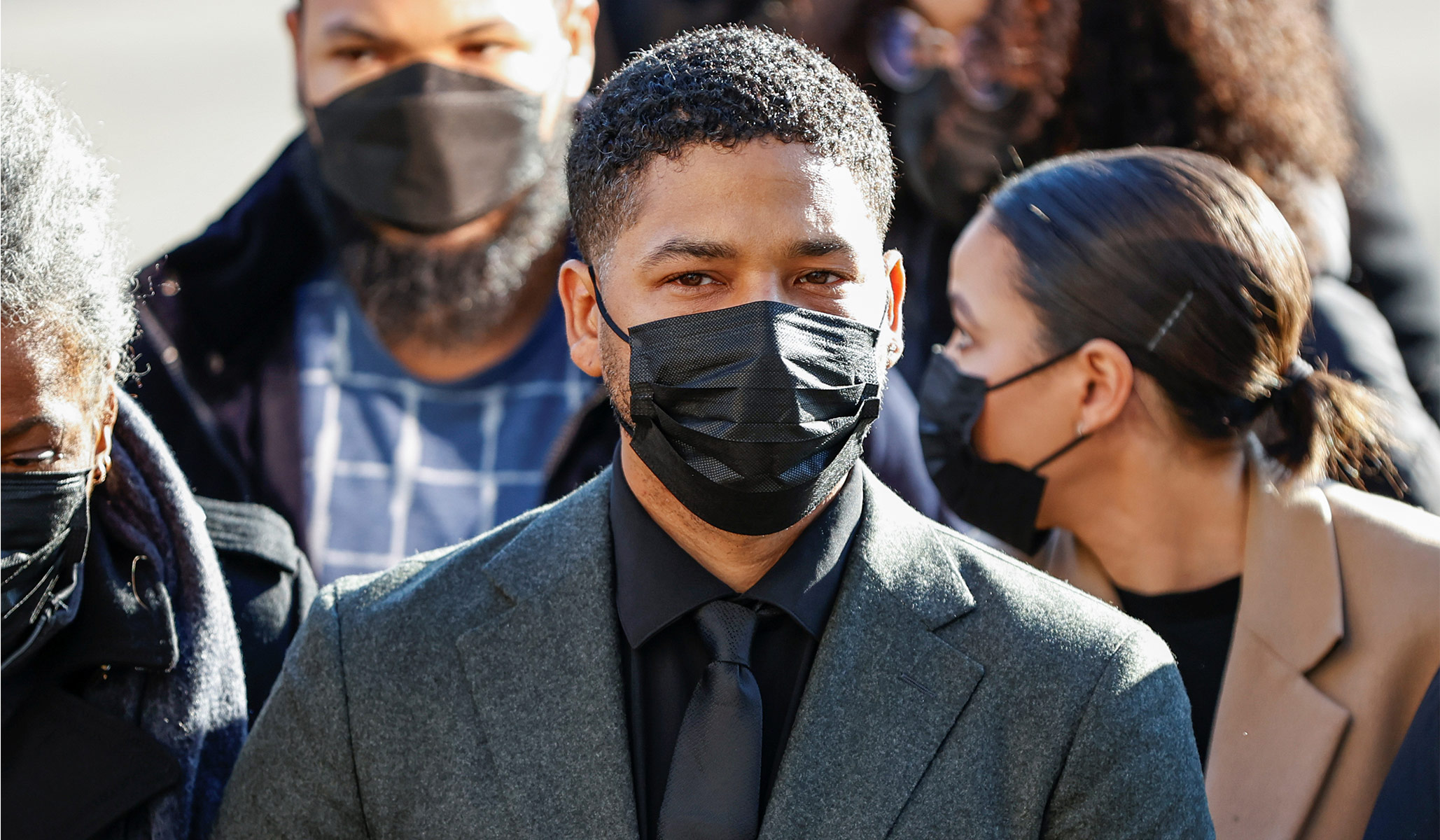Chicago, Ill. — Chicago police spent more than 3,000 hours investigating the alleged racist and homophobic attack against former Empire star Jussie Smollett in 2019, collected and reviewed more than 1,500 hours of surveillance footage, and worked long days for over a week in sub-zero temperatures, lead detective Michael Theis testified on Tuesday morning.
Theis was the prosecution's first witness in the criminal case of an alleged fake hate crime against Smollett. The 39-year-old actor and singer claimed that just after 2 a.m. on Jan. 29, 2019, he was pummeled by two men who doused him in bleach, used racist and anti-gay slurs, hung a noose around his neck, and proclaimed "this is MAGA country."
The questioning of deputy special prosecutor Samuel Mendenhall clearly was intended to point out the significant effort investigators put into solving the case, an apparent rebuttal to the defense's claim on Monday that police made a rush to judgement against Smollett.
Why the effort, Mendenhall asked Theis.
"This was horrible. The crime was a hate crime, but a horrible hate crime to me. There was a noose. There was bleach," Theis said, also noting the local and national interest in the case. "Everybody wanted to know what happened."
Police uncovered such a massive amount of surveillance footage that they were able to track the detailed movements of Smollett's alleged assailants before and after the attack, including the taxis and ride share vehicle they rode in. The alleged attackers – later identified as Abimbola and Olabinjo Osundairo, brothers who had worked as extras on Empire – paid cash for the cabs that took them to and from the scene, and they took other steps to avoid detection. But police eventually identified them because before they rode in a taxi to the scene of the alleged attack, they'd first ridden in an Uber, and Uber keeps records of its users.
Identifying the Osundairos "came from hard work," Mendenhall said.
Mendenhall also questioned Theis about Smollett's statements to police, including saying that at least one of this two attackers was white. "He said they were wearing dark clothing. One of them was white. He said he could see around the mask," Theis said.
The Nigeria-born Osundairos are black. Mendenhall showed the jury a photo of them.
Theis also testified that Smollett declined to turn over his cell phone to investigators, refused to release his medical records from his time in the hospital after the alleged attack, and refused to provide a DNA cheek swab.
By the time investigators had identified the Osundairos as suspects, they had already left the country on a trip to Nigeria, Theis said. They were arrested, separately, upon their return. They were not allowed to "chit chat" or to talk to one another after their arrest, Theis said, rebutting a defense claim during Monday's opening statements.
After securing an attorney, Olabinjo Osundairo agreed to talk with investigators, and he told them that Smollett had hatched the plan for the fake attack, taken them through a dry run the day before it was supposed to occur, and gave them money and instructions of what to do. Abimbola Osundairo agreed to speak with investigators as well, corroborating his brother's statements, and providing investigators with a motive: Smollett had received a hate letter at the Empire studio, and he didn't think the studio leaders were taking it seriously enough.
The defense has called the Osundairos liars and criminals, but surveillance videos, text messages, and GPS data from Smollett's and the brothers' cell phones backed up their stories, Theis said. Smollett wrote out a $3,500 check to the Osundairos after they made a dry run of the alleged attack on Jan. 27, 2019. Investigators tracked down the check and the deposit slip. Investigators tracked down video from a store of the Osundairos buying ski masks and a red MAGA-like red hat on Jan. 28, 2019, as they said Smollett instructed them to do. Investigators also have the receipt for the rope the Osundairos bought to hang around Smollett's neck.
Phone records on the 28th showed Smollett called Abimbola Osundairo several times and sent him Instagram messages before the alleged attack, letting him know that his flight from New York to Chicago was delayed. Prosecutors say that pushed the fake attack back several hours.
Did the brothers tell the truth, Mendenhall asked Theis.
"I believe so," Theis said. "I couldn't find anything false."
After the alleged attack, surveillance video showed that Smollett returned home with the rope still around his neck. He kept it on until police arrived. Body camera footage showed that by the time police arrived, Smollett had adjusted the rope to look more like a noose.
Theis said the evidence showed that Smollett orchestrated the attack against himself.
"At the end of the investigation," Theis said, "we determined the alleged hate crime was actually a staged event, and that it did not occur."
Smollett faces six low-level disorderly conduct charges. If he's found guilty, he could be sentenced to up to three years behind bars, but he could also receive probation and community service. Smollett has pleaded not guilty to the charges.
Theis's testified for about four hours Tuesday morning. Smollett's defense lawyers will have an opportunity to cross-examine him on Tuesday afternoon.


![Breaking: Police Only Concluded Jussie Smollett Attack was Staged after In-Depth Investigation, Lead Detective Testifies]() Reviewed by Diogenes
on
November 30, 2021
Rating:
Reviewed by Diogenes
on
November 30, 2021
Rating:












No comments: